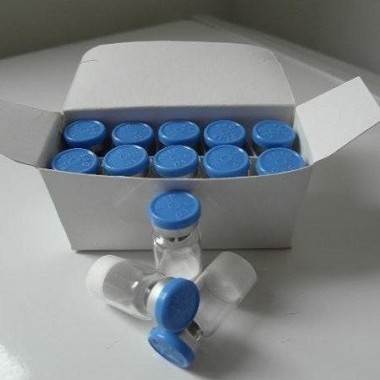Product DescriptionPentadecapeptide Bpc 157
Synonyms :Bpc 15, Bpc-157, Booly protection compound 15
CAS NO. :137525-51-0
Molecular Weight :1419.53552
Molecular Formula :C62H98N16O22
Appereace:White powder
Sequence :Gly-Glu-Pro-Pro-Pro-Gly- Lys-Pro-Ala-Asp-Asp-Ala-Gly-Leu-Val
Storage :Lyophilized BPC 157 is stable at room temperature for 90 days,however it should be stored in a freezer below -8C for any extended period of time. After reconstituting BPC 157 should be refrigerated at temperatures not to exceed 36 F.
BPC 157 is known for super quick and professional Joint/tendon/ligament healing in all phases of clinical trials.. studies are shown here: BPC 157 has been shown in studies to heal torn quadriceps muscles, detached achilles tendon, muscles that have been damaged/crushed. Demonstrating dramatic fast recovery from muscle tears. Tendon to bone healing - increased ligament healing, BPC 157 has a variety of protective effects in the organs.Product FeatureProduct Feature
Pentadecapeptide BPC 157, composed of 15 amino acids, is a partial sequence of body protection compound (BPC) Pentadecapeptide BPC 157, composed of 15 amino acids, is a partial sequence of body protection compound (BPC) that is discovered in and isolated from human gastric juice. The promoting effect of pentadecapeptide BPC 157 on tendon healing involves tendon outgrowth, cell survival, and cell migration. Stable gastric pentadecapeptide BPC 157 (GEPPPGKPADDAGLV, M.W. 1419) may be the new drug stable in human gastric juice, effective both in the upper and lower GI tract, and free of side effects.Product Specification / ModelsProduct Specification / Models
BPC 157, in addition to an antiulcer effect efficient in therapy of inflammatory bowel disease (IBD)(PL 14736) so far only tested in clinical phase II, has a very safe profile, and exhibited a particular wound healing effect. It also has shown to interact with the NO-system, providing endothelium protection and angiogenic effect, even in severely impaired conditions (i.e., it stimulated expression of early growth response 1 gene responsible for cytokine and factor generation and early extracellular matrix (collagen) formation (but also its repressor nerve factor 1- A binding protein-2)), important to counteract severe complications of advanced and poorly controlled IBD. Hopefully, the lessons from animal studies, particularly advanced intestinal anastomosis healing, reversed short bowel syndrome and fistula healing indicate BPC 157s high significance in further IBD therapy. Also, this supportive evidence (i.e., no toxic effect, limit test negative, LD1 not achieved, no side effect in trials) may counteract the problems commonly exercised in the use of peptidergic agents, particularly those used on a long-term basis.




